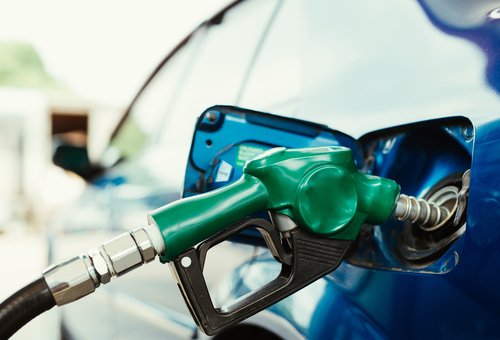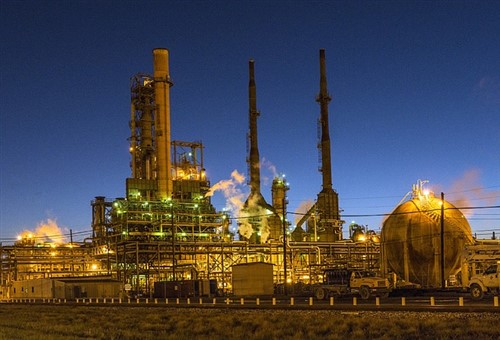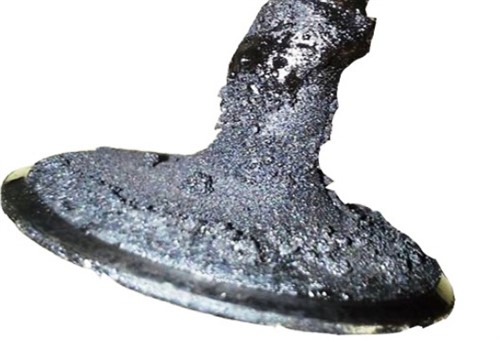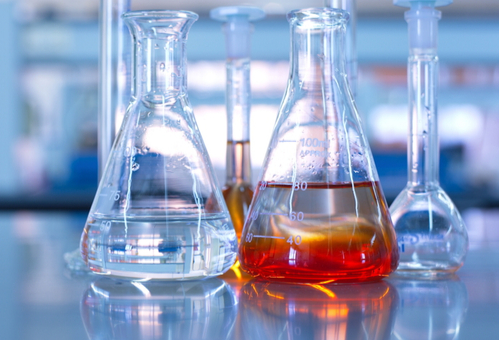
If you are new to the car repair trade, you might not have heard of the old adage that says, "Fix the fuel, and you fix the car". Veterans of the trade, on the other hand, are probably all aware of this truism, and while the basic recipe of petrol has improved and changed over the past few decades, many drivability and emission control issues still stem directly from poor fuel quality, hence the title of this article- The Problem in the Fuel Tank. In this article then, we will discuss the types of problems that poor fuel quality presents, as well as how to perform quick and easy tests you can perform yourself to determine fuel quality. However, before we get to specifics, we need to discuss where petrol comes from, and why petrol formulations are not all the same, starting with-

We all know that petrol is the product of a process of distilling crude oil, but what is not commonly known is that the basic chemical properties and composition of crude oil feedstock can vary greatly. We need not delve into the chemistry of crude oil here, beyond saying that some oil stocks can are vastly more acidic, and contain greatly more sulphur and other chemical constituents than others do, depending on where in the world the crude oil was extracted.
These differences result mainly from the types of plant material that were transformed into oil, as well as the mineral composition of the earth’s crust in which oil pockets formed. Other factors, like for instance, the time it took for plant material to transform into oil also feature in this equation, but to a lesser degree, but in combination, these three factors are the main determinants of the chemical composition of crude oils that are extracted today. So why is this important?
It is important because the basic chemical properties of crude oil largely determine which volatile components of the crude oil are transported up the distillation tower when the crude oil is heated. Many of these volatile chemical constituents then condense with the fraction of the oil that is destined for the production of petrol, and while chemical engineers in most markets have developed methods to remove unwanted chemical fractions from unrefined petrol, these processes are hugely complicated, and, therefore, hugely expensive.
Note that we said, “most markets”, which means that some petrol that is imported into Australia from refineries in other countries might a) contain undesirable chemical constituents, or b), might suffer from an imbalance between octane and heptane. These are the two most important chemical components of petrol, and between them, they determine how well petrol resists knocking on the one hand, and how readily it ignites in a cylinder, on the other, which brings us to the-
In Australia, the quality of petrol, (and all other fuels, including all other automotive fuels) is managed by both theFuel Quality Standards Act 2000, and the Fuel Quality Standards Regulations 2019, and both pieces of legislation make for some very interesting reading.
The sections in the Fuel Quality Standards Act 2000 that deal with among other things, the penalties that attach to things like the unauthorised changing of fuel standards, not adhering to fuel standards, importing and distributing prohibited fuel additives, and supplying unregulated or substandard fuel to the public, are particularly interesting. Not because these penalties exist, but because the law contemplates so many possible contraventions of a law whose primary function should have been to establish proper control and management of fuel quality standards, in the first place.
Note that it is not the intention of this article to attack or blame any person or entity for the poor quality of automotive fuels in Australia. Things are what they are, including the fact that (as of April 2019) Australian petrol is among the cheapest in the world, and the fourth cheapest in all 36 countries that make up the OECD (Organisation for Economic Co-operation and Development) countries. However, this low price comes at other, real-world costs to both motorists and the environment that are not reflected in the actual prices that motorists pay for petrol when they fill up their tanks.
While the environmental issues fall outside the scope of this article, the effects that excessive amounts of sulphur have on engine performance and sensor life does not. For instance, Australian 91-octane unleaded petrol still has a maximum allowable sulphur content of 150 ppm (parts per million), while 95 and 98 unleaded premium petrol can still contain as much as 50 ppm of sulphur.
To put this in perspective, consider the fact that both standards were outlawed in Europe more than a decade ago, and that current standards in Europe do not allow the sulphur content of petrol* to exceed 10 ppm.
* By way of contrast, the sulphur content of Australian diesel was limited to 10 ppm as long as ago as 2009.
As a practical matter, the Federal Government does not envision an overhaul of the fuel quality standards in Australia to match those of Europe concerning sulphur content until at least 2027. Sadly, this means that until then, the Australian motoring public will not have access to the latest generation of super environmentally friendly and fuel-efficient cars that are now becoming available in the European and other markets, simply because these vehicles cannot run efficiently on poor-quality Australian petrol, which brings us to-
The current Australian fuel quality standards also control petrol/ethanol blends, with E10 blends being limited to no more than 10% of ethanol by volume, and E85 being limited to contain between 70%, but no more than 85% of ethanol by volume. Note though that some jurisdictions in the country do not allow the use of ethanol in petrol.
While the Standards spell out the various chemical parameters that fuel-grade ethanol must comply with to meet minimum legal requirements, it should be noted that one parameter concerns water, but more precisely, that fuel-grade ethanol can legally contain up to 1% of water. The Standard does not say if water can exist in its free form, or if it can only exist in dissolved or entrained form, though.
Not that it matters much, since even 1% of water in any form in fuel can, and does form corrosion in pumps, injectors, and other injection equipment. However, since petrol-based fuels contain corrosion inhibitors, corrosion is usually fairly well controlled, provided of course, that the water content of the fuel does not exceed about 1% or so by volume, and herein lays the problem.
Ethanol is highly hygroscopic, which means that a) it readily attracts and absorbs water from the atmosphere, and b), in severe cases, the petrol and ethanol in the blend can separate in a process that is called "phase separation".
In practice, the process of water absorption can occur in one of two ways. If the fuel tank is open to the atmosphere, the rate of water absorption becomes dependent on the vapour pressure in the storage tank. Therefore, in the case in bulk-storage facilities or on storage tanks in tanker ships that are vented to the atmosphere, the rate of water absorption increases as some volatile components of petrol evaporate at ever-increasing rates because of decreasing vapour pressure.
On cars, however, the fuel tank itself is not open to the atmosphere, but a) the purging of fuel vapours through the EVAP system, and b), the permeability of plastic fuel tank walls allow some volatile constituents in petrol to escape or evaporate through the tank walls. The former mechanism allows moisture into the fuel tank, while the latter mechanism reduces vapour pressure, which increases the rate of water absorption through the EVAP system.
If one adds to these factors the fact that uncontrolled amounts of water can (and often does) enter petrol/ethanol blends at multiple points in sometimes very long distribution chains or complex wholesale/retail networks, it is possible to buy a petrol/ethanol blend at the bowser that has become unfit for its purpose because of its excessive water content. Of course, this begs the following question-

Image source: https://ricksfreeautorepairadvice.com/wp-content/uploads/2017/09/carbon-buildup-on-valve.jpg
Note that the above image shows the build-up of carbon on an intake valve, which is the most common symptom of direct petrol injection since the valves are not exposed to detergents in petrol. This phenomenon cannot be blamed directly on the poor quality of Australian petrol, but put simply, the poor quality of Australian petrol causes other issues that generally leaves us up the proverbial creek without paddles.
For instance, who among us has not encountered vehicles with misfires that defy diagnosis and resolution, or engines that run just a little rougher, are just a little harder to start than we would expect, or vehicles that suffer repeated oxygen sensor and/or catalytic converter failures for no obvious reason?
Sadly, there is no reliable data available on the prevalence of these kinds of issues on late-model vehicles. Nonetheless, it is instructive to consider the fact that the minimum current standard for exhaust emission standard for light passenger vehicles in Australia is ADR 79/04, which is equivalent to the Euro 5 standard, whereas the current standard in the EU is Euro 6, which had been in force since 2014.
In practice, this means two things, these things being-
The last point is particularly important from our perspective as technicians for three reasons, these reasons being the facts that-
In the interests of objectivity though, it must be stated that Australian petrol keeps Australian vehicles moving, albeit sometimes with varying degrees of drivability issues that stem directly from the poor quality of Australian petrol.
However, not all difficult-to-diagnose driveability issues stem from poor fuel quality, but since poor fuel quality plays a huge role in these kinds of issues, how do you know you are dealing with fuel quality issues, as opposed to some kind of system and/or component failure? Here are some pointers to-
We stated elsewhere in this article that petrol/ethanol blends are particularly susceptible to water contamination on the one hand, and that you can never be sure about just how much ethanol a particular petrol/ethanol blend contains, on the other.
Unfortunately, there are no quick and easy ways to test the quality of the ethanol content of these blends, except to replace the suspect fuel to see if the problem goes away, or at least, improves.
On the other hand, testing for water contamination is very easy with water finding paste. You simply apply some to a non-absorbent object such as a glass rod and dip the pasted end into a sample of fuel. If water is present, the paste will change colour, with the amount of water* largely determining the rate at which the colour change happens. However, since petrol/ethanol blends contain water almost as a matter of course, this test is not definitive in the sense that the amount of water in the blend can be quantified with any degree of accuracy.
*Note that this particular brand of water finding paste is also effective in identifying common contaminants in petrol such as sulphuric acid, nitric acid, hydrochloric acid, soap solution, various salts, and all other chloride solutions, which is particularly useful if you are dealing with suspect biodiesel.
Nonetheless, with some practice, it becomes possible to infer the relative water content of the blend, and with some more practice, it will become possible to distinguish between water contamination and excessive amounts of ethanol in the petrol/ethanol blend as the primary cause of rough running or even misfires at some engine speeds and/or loads.
Elsewhere in this article, we mentioned the balance between octane and heptane in petrol, and while we do not need not delve into the chemistry of these substances, we can say that octane is a molecule with eight carbon atoms, while heptane is a molecule with seven carbon molecules.
In practice, the octane rating of a given petrol formulation defines the percentage of octane it contains relative to heptane. Thus, 91-octane petrol will contain 91% octane to resist uncontrolled ignition or detonation, and 9% heptane plus a few other carbon chains to improve combustion, and apart from approved additives like corrosion inhibitors, detergents, and metal deactivators, the octane/heptane relationship forms the basis of all petrol formulations. Why is this important?
It is important because the static compression ratio of an engine determines which octane rating will work best in that engine. We all know this, but what we do not always know is how, and to what extent a Euro 5 compliant engine management system had been recalibrated to work with Australian petrol. Therefore, it could be that while a vehicle manufacturer recommends that a particular model should only use, say 91 octane fuel, 95 octane fuel, or even 98 octane fuel might resolve persistent knocking or rough running issues because of these fuels' higher resistance to premature or uncontrolled ignition of the air/fuel mixture.
However, this remedy will typically only work on engines that automatically keep the ignition timing advanced to just below the point where knocking occurs because these systems can retard the ignition timing far enough to eliminate knocking.
While the above may be mildly interesting to some readers, the bad news is that the octane/heptane relationship in petrol cannot be tested, except under hugely expensive laboratory conditions. However, there is an easy way to test both the water content, and in a roundabout way, the ethanol content in petrol should contain neither. Here is how-

While dissolved water in petrol will readily separate from petrol if a suspect petrol sample is not disturbed, ethanol that is dissolved into petrol will not separate until a certain percentage of volatiles and aromatics have evaporated out of the petrol. Thus, if we assume that the suspect petrol/ethanol blend is not old enough for the ethanol to have separated (around 3 months or so, depending on ambient temperatures), we can add some water to the sample to get a rough estimate of the total water and/or ethanol content of the sample. Here is how-
The easiest way is to obtain a clear glass beaker or similar container from a pharmaceutical supplier, but make sure the container is marked in ml or cc's, and that it has a lid that can close tightly to prevent spills and leaks.
If the fuel is not contaminated with water, a separation line between the water and petrol will form at exactly the 2-unit mark. If, however, a separation line forms above the 2-unit mark, the petrol contains ethanol, with the distance of the separation line above the 2-unit mark being directly proportional to the amount of ethanol in the petrol, which leaves us with this-
Most car manufacturers claim that all late-model vehicles can use E10 ethanol/petrol blends as a substitute for 91-octane petrol without any adverse effects. However, this statement assumes that both the petrol and ethanol components of E10 blends are formulated to conform to current Euro 6 emissions standards, which are impossible to achieve with a) Euro 5-level petrol and/or b), engines that run on Euro 5-compliant engine and fuel management calibrations.
Moreover, unlike normal fuel/air metering faults that typically set abnormal fuel trim values, lean, and/or rich running and catalytic efficiency codes, the only diagnostic clues we often have that some driveability issues stem from poor fuel quality are recurring oxygen sensor and/or catalytic converter failures as the result of contamination by the excessive sulphur content of petrol.
While there are no quick fixes for the poor quality of Australian petrol, we hope that the information presented here has given you some insights into the causes of some drivability issues that resist all conventional attempts at diagnosis and resolution, since it's all about the problem in the fuel tank.